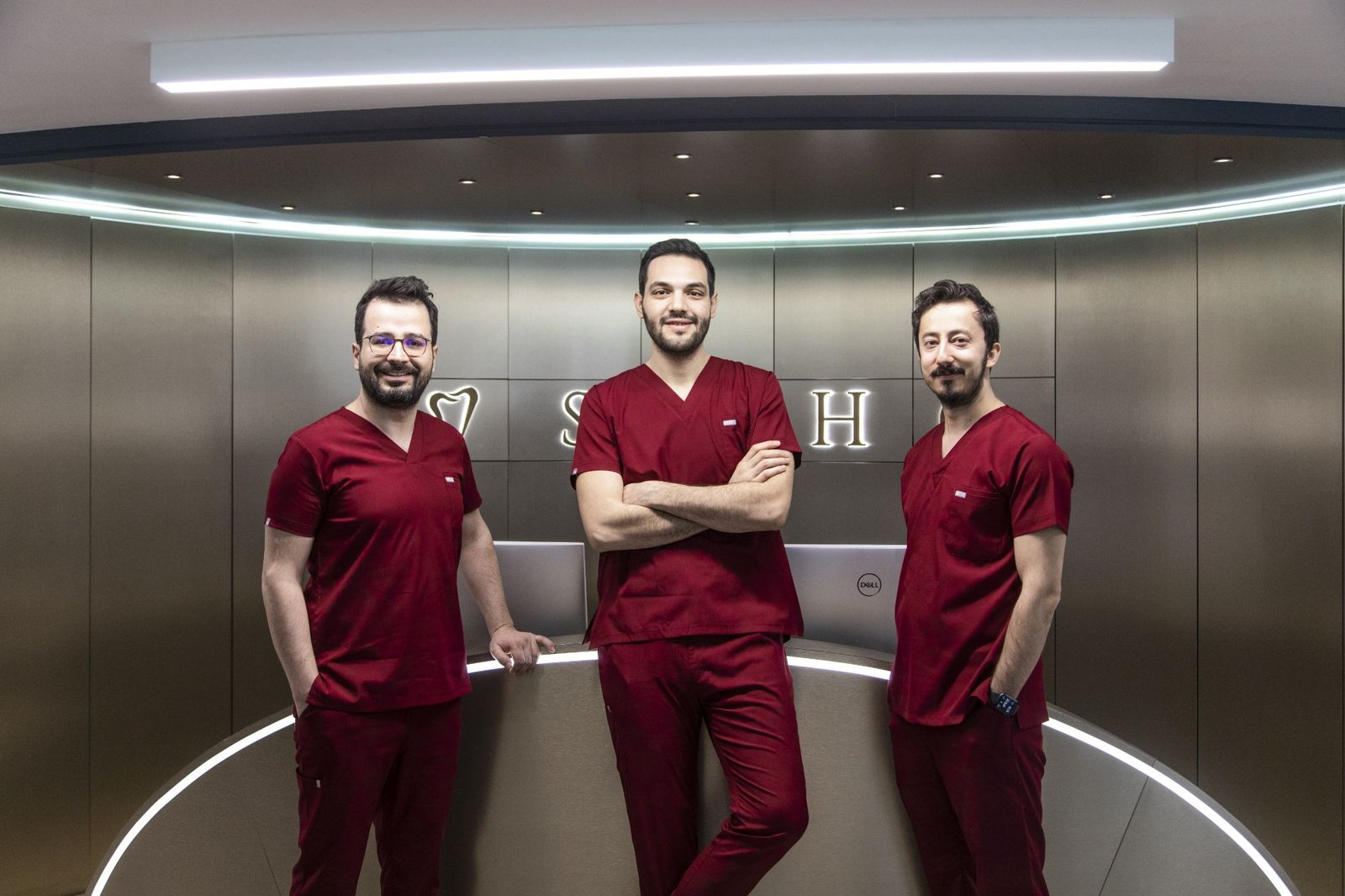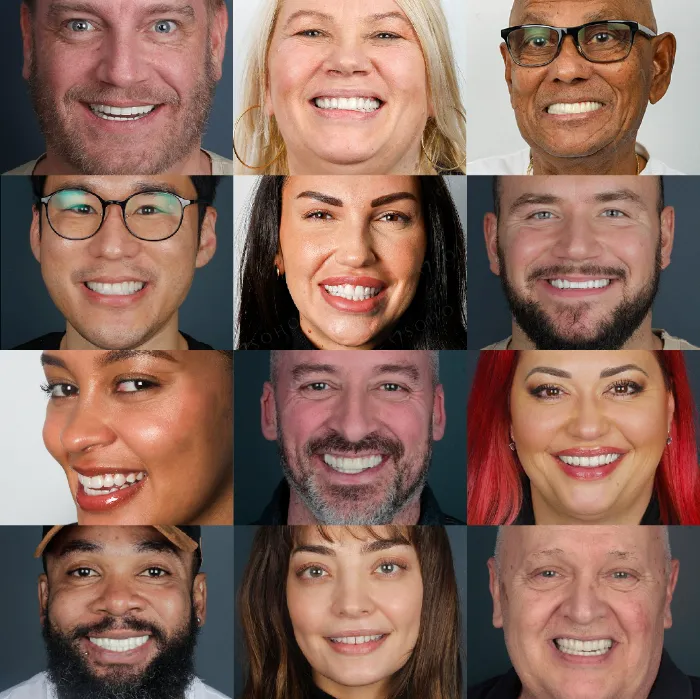
Losing many teeth changes daily life. Eating becomes hard. Speech is not the same. Smiling in photos can feel stressful. A fixed full-arch solution can help. All-on-6 dental implants place six strong titanium posts in the jaw to hold one solid bridge of new teeth. The bridge stays in your mouth. You do not take it out at night. It looks natural and feels stable when you bite.
All-on-6 is part of a family of “full-arch” treatments. Dentists can also use four, six, or sometimes more implants to support a full set of teeth. Your team chooses the number after scans and planning. The choice depends on your bone, your bite forces, and your medical needs.
.webp)

All-on-6 means six implants are placed in the upper jaw or the lower jaw. They act like artificial roots. After planning with 3-D scans, the surgeon places the implants at spots that carry chewing forces well. A custom bridge is then attached. Many people leave surgery wearing a temporary set of fixed teeth. Later, after healing, you receive the final bridge that is shaped and polished to match your smile and bite.
Both options replace a full arch of teeth with a fixed bridge. All-on-6 uses six implants. This can spread the load and may give extra support, especially in the back areas of the jaw. Research using computer models shows that six implants can reduce stress on the bone and the implants compared with four in some situations. But the “best” choice is personal. Bone quality, anatomy near the sinuses or nerve, clenching or grinding, and other factors all matter. Your dentist will explain which plan is safest for you.

You may be a good candidate if you have lost most teeth in one jaw, want a fixed solution, can keep good daily oral hygiene, and have enough bone for implants or are open to bone-building procedures when needed. Chronic conditions such as diabetes should be well controlled. Smoking increases the risk of problems, so stopping before surgery is strongly recommended. Final decisions come after a clinical exam and CT scan.
Your dentist reviews your medical history and medicines. Photos and a panoramic X-ray or CBCT scan are taken. Computer planning helps the team choose the safest positions and angles for each implant. You also discuss tooth shade, shape, and the material of the final bridge.
Six implants are placed under local anaesthesia. Many clinics also offer sedation to help you relax. If the implants are very stable at the end of surgery, a temporary fixed bridge can be attached on the same day. This is called immediate loading and it is only done when primary stability is strong enough, because stability is a key requirement for safe immediate loading.
Your bone bonds to the implants in a biological process called osseointegration. For most people this takes about three to six months, and it can be longer in the upper jaw. During this time, you follow a soft-diet plan and careful hygiene so the implants stay undisturbed.
When healing is complete, your dentist takes accurate records and fits your final bridge. Choices usually include monolithic zirconia (strong, aesthetic) or a hybrid metal-acrylic option (lighter, easier to repair). The bite is balanced and you receive cleaning tools and instructions.

People often report that eating is easier, speech is clearer, and smiling feels natural again. They like that nothing comes out at night. They also like that face shape can look fuller because implants help support the bite and reduce bone loss in the areas where implants are placed.
All surgery has risks. Early after surgery you can have swelling, bruising, and soreness. These usually settle in a few days. The main long-term biological risk around implants is gum and bone inflammation called peri-implantitis. Good daily home care, smoke-free habits, and regular professional cleaning reduce this risk. Mechanical issues can also happen over the years, such as a loose screw or a chipped veneer, and these are usually fixable at a maintenance visit.

Rest and keep your head up when sleeping. Use cold packs on and off for the first day or two. Take medicines as prescribed. Do not use straws and do not smoke because suction and smoke can disturb healing. Choose cool liquids and very soft foods.
Rinse gently with lukewarm salt water, unless your dentist says otherwise. Start to brush very gently around the area, then expand as comfort allows. Stay with soft foods and avoid alcohol and exercise that makes your heart race. Keep your follow-up appointment.
Healing in the jaw continues for three to six months. Your team will tell you when to add firmer foods. Protect your implants by avoiding very hard items until you are cleared.
Clean twice a day with a soft brush. Use super-floss or small interdental brushes to clean under the bridge. A water-flosser can help if your dentist recommends it. Professional maintenance visits are important. Many implant patients are seen every three to six months at first, and then at a schedule that matches their risk. These visits remove plaque and check the tissues and screws before small issues become big ones. Good maintenance supports long-term success.
Implants can last for decades when you keep good hygiene, attend maintenance visits, and control risk factors like smoking. The bridge is like the tires on a car; it may need repair or replacement after years of use. Regular checks help you plan these updates calmly and early.
Is the surgery painful?
You are numb during surgery and many clinics offer sedation. Most people describe mild to moderate soreness for a few days. Medicines and cold packs help.
Can I get temporary fixed teeth the same day?
Sometimes yes. It depends on how stable the implants are when placed and on your bone quality. Your dentist will decide this safely on the day of surgery.
How long is the total timeline?
Planning and surgery happen first. Osseointegration takes about three to six months. Then the final bridge is fitted.
What materials are used for the final bridge?
Many teams use monolithic zirconia or a hybrid metal-acrylic design. Your choice depends on your bite, esthetic goals, and the advice of your dentist.
What are the biggest long-term risks and how do I avoid them?
Peri-implant inflammation and plaque are the main risks. Daily cleaning, smoke-free habits, and regular professional maintenance reduce these risks.
Look for a team that does full-arch work often. Ask about the surgeon’s training and the number of similar cases each year. Confirm that CBCT-based planning is used. Ask which implant brands and which bridge materials they use and why. Make sure you will get written aftercare instructions and realistic follow-up access. If you will travel, read neutral guidance on planning treatment abroad so you feel safe and organized.

Experienced full-arch team, digital planning, and modern equipment.
English-speaking coordination and smooth logistics from first consult to follow-ups.
Independent review footprints you can check (plus Patient Stories below).
Independent reviews:
Plan: All-on-6 full-arch implant rehabilitation after consultation.
Day 1: Surgery performed in a modern, hygienic clinic; comfort well managed.
Follow-up: Routine checks and clear home-care guidance.
Outcome: “I couldn’t be happier… top-tier quality care without overwhelming prices. I highly recommend Soho Dental Clinic.”
Read independent comments: Trustpilot – Soho Dental Clinic
Plan: Full-mouth restoration with replacement of a failed previous implant.
Day 1: Implant replaced by Dr. Unur Utku; patient reports no pain during or after surgery.
Follow-up: Ongoing bite and healing checks; supportive staff throughout.
Outcome: “I’m so happy with my teeth and smile… they make sure patients leave with a big, beautiful smile.”
Read independent comments: DentalImplantsTurkey.net – Soho reviews • Trustpilot – Soho Dental Clinic
Plan: Aesthetic phase first (multiple crowns and whitening), with implants planned for a future visit.
Day 1: Welcome and treatment planning; courteous, attentive team.
Follow-up: All work completed in three days; whitening included; next stage scheduled for implants.
Outcome: “Excellent service… I’ll come back here again to do implants. I definitely recommend this clinic.”
Read independent comments: DentalImplantsTurkey.net – Soho reviews
Plan: Implant treatment to restore function and address an overbite concern.
Day 1: Surgical phase completed with supportive team; comfort prioritized.
Follow-up: Progressive adjustments and check-ins during healing.
Outcome: “I’m very satisfied with their work… everyone is kind and they do their best to make patients satisfied.”
Read independent comments: Trustpilot – Soho Dental Clinic
Every mouth and every journey is unique, but many people say similar things after full-arch treatment. Several months after fitting the final bridge, patients often tell us that eating is simple again, that they smile more in social events, and that friends notice they look happier. These are common lived experiences with fixed implant bridges, and they reflect the strong chewing and stable feel of the restoration. (Your own timeline and comfort will depend on your health and your healing.)
All-on-6 can be a life-changing treatment when it is planned well and cared for daily. The steps are clear. The healing timeline is known. The maintenance rules are simple. If you want fixed teeth again, start with an online case review. Share your scan if you have one. Ask every question on your mind. A careful plan will guide you from first scan to final smile, one step at a time.

